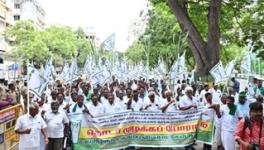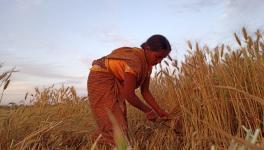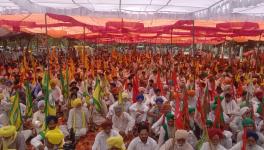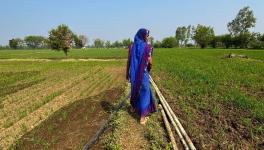Govt Agencies Procure Least Amount of Produce From Farmers: NSO Survey

Representational Image. Image Courtesy: Telangana Today
The majority of Indian farmers sell their produce in local markets, according to the 77th round of the National Sample Survey (NSS) conducted by the National Statistical Office (NSO). The survey report titled ‘Land and livestock holdings of households and situation assessment of agricultural households’ shows that government agencies and the Agricultural Produce Market Committees (APMCs) procure the least amount of produce from farmers.
For the 18 types of crops covered in the survey, farmers sold 55% to 93% of their produce in local markets. In APMC markets, the share ranged from 3% to 22%, while government procurement accounted for 2% to 14%. The survey found that across crops, farmers prefer to sell their produce in the local markets.
Paddy, wheat, and sugarcane had the highest share among the crops that farmers sold to APMC markets and government agencies. This is because these crops have the minimum support price (MSP) coverage and proper established procurement channels.
However, despite this, in the case of paddy, farmers sold 75.1% of their produce in local markets. Government agencies and APMC markets accounted for only 10.5% of the produce sold by the farmers. Similarly, in the case of wheat, farmers sold 66% of their produce in local markets, while APMC and government procurement took up only 26% of it.
When it comes to pulses, farmers almost always prefer to sell in local markets. Farmers sold 68% of their Arhar (red gram) in local markets and 22% in APMC markets. Government agencies accounted for just 1.7% of the farmers’ sales.
In the case of moong (split green gram), the difference was even starker. Farmers sold 93% of their moong crop in local markets, while APMC and government agencies picked up about 5%.
The NSO survey also explored whether the farmers were happy with the sales outcomes. The answer differed across the range of crops, though it showed that the majority of farmers were ‘satisfied’ with the sales outcome or the return from their produce.
Among the paddy farmers, nearly 59% were satisfied with the sales outcome, while 66.2% were satisfied with their wheat sales. However, for pulses, the sales outcome’s satisfactory level was lower compared to other crops. For urad (black gram), only 40% of farmers were satisfied with the sales outcome, while for arhar, nearly 51% of the farmers were satisfied.
The NSO survey shows that the satisfaction levels leave out a significant percentage of farmers who are not happy with the sales outcomes. The survey has listed five reasons for dissatisfaction among farmers: ‘lower than market price’; ‘delayed payment’; ‘deduction for loans borrowed’; ‘faulty weighing and grading’ and ‘others’.
According to NSO, among these reasons, ‘lower than market price’ is the overwhelming reason for farmers not being satisfied with their sale outcomes. For paddy sales, 37.1% of the farmers cited this as the reason for being ‘not satisfied’ with the sales outcome.
Moreover, according to the survey, nearly 50% of the country’s agricultural households were in debt, with the average outstanding loan per household at Rs 74,121 in 2019.
Get the latest reports & analysis with people's perspective on Protests, movements & deep analytical videos, discussions of the current affairs in your Telegram app. Subscribe to NewsClick's Telegram channel & get Real-Time updates on stories, as they get published on our website.
























